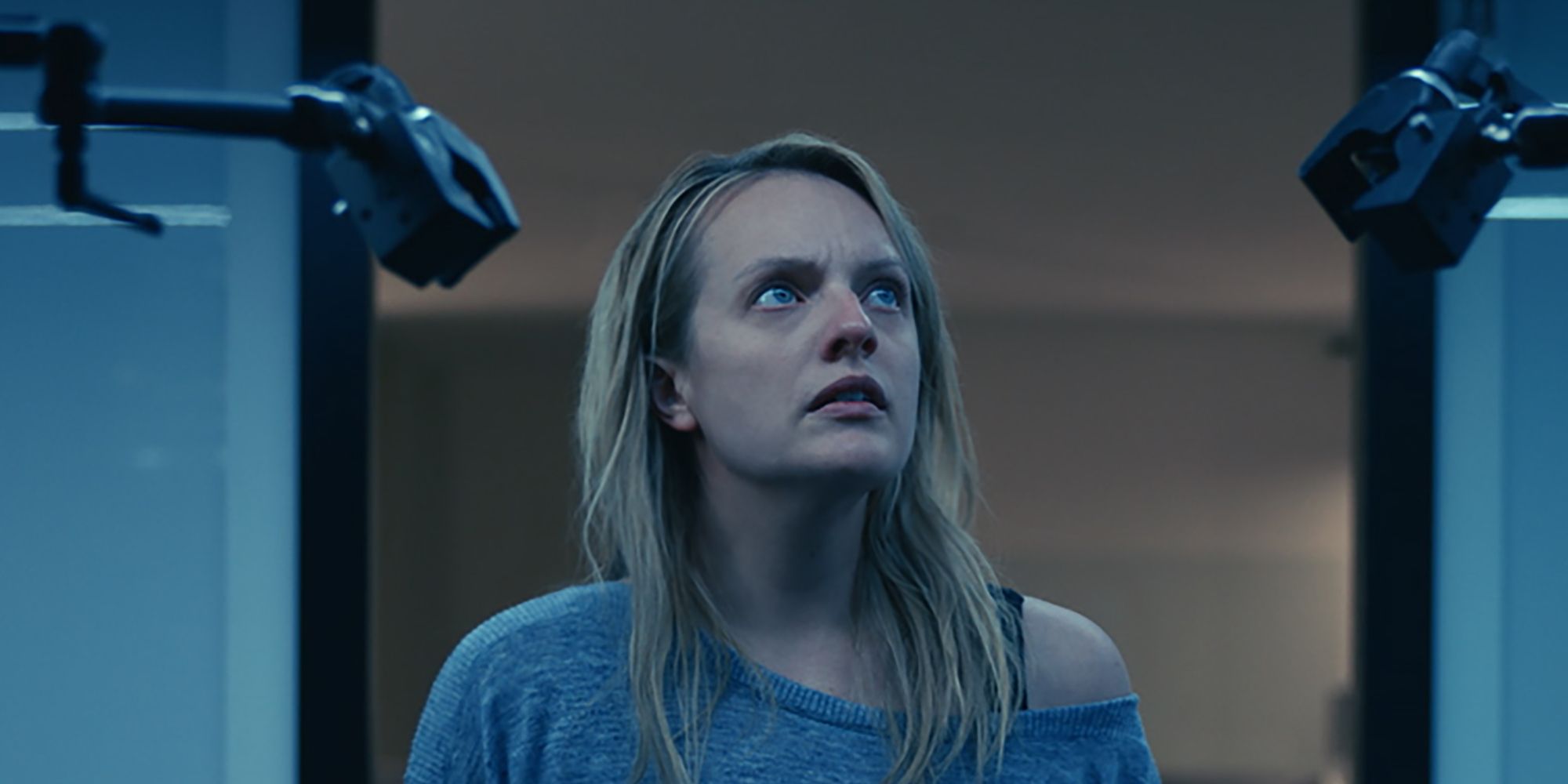The Invisible Man uses real-life experiences of domestic abuse to craft a frightening story, flipping the original idea on its head, and director Leigh Whannell conducted extensive research to pull it off.
The Invisible Man stars Elisabeth Moss as Cecilia, a woman tormented by her millionaire tech-giant ex-boyfriend Adrian, played by Oliver Jackson-Cohen. It opens with a scene where she flees his fortress-like mansion in the middle of the night, only narrowly escaping. Her ex-boyfriend then fakes his own death and proceeds to manipulate her life by pushing her friends and family away. To accomplish this, he uses a suit that allows him to become completely invisible.
What’s interesting is that previous iterations of The Invisible Man have always focused on the man himself and on how becoming invisible begins to turn him into a monster. In director Whannell’s new take on the story, the invisible man is already a monster and the narrative is centered on his victims, mainly his ex-girlfriend Cecilia. This shines a new light on the source material, creating the perfect metaphor for domestic abuse.
The Invisible Man Portrays Domestic Abuse In a Realistic Light

Setting out to tell the story from the woman’s perspective, Whannell reached out to domestic violence counselors for their input. He also spoke with female friends and was surprised to hear commonalities in their stories, such as women walking to their cars with their keys between their fingers to use as a weapon if needed. He was also shocked by some of the stories he heard. Whannell told Time, “In one story, a woman’s partner put a lock on the fridge to control when she could eat. Only he had the combination to the lock. I was so shocked by that. It started to dovetail neatly into this character I was creating.” Whannell even sat down with Moss herself to review the script in order to adequately capture the female experience.
Whannell chose not to show the physical abuse on the screen, as the movie remains scary and violent without it. Instead, he focused on the psychological consequences for Cecilia. For instance, Cecilia is afraid to leave the house, fearing that Adrian will find her. Once she thinks she’s safe, he begins to manipulate her life and drives her friends and family away; this is a common practice amongst abusers. He leverages his money by leaving her millions in his will and then, after she’s used a good portion of it to pay for a friend’s education, conspires to have it all taken away again. He even sabotages her reproductive freedom so she becomes pregnant and forever tied to him through their child. All of these techniques are employed by real abusers, so Adrian’s toxic character is factual.
The Invisible Man Is Scary Because It’s Real

What makes The Invisible Man truly scary, and perhaps why it has garnered such positive reviews, is its depiction of real-life domestic violence. It highlights the very issues women face in the #MeToo era, as nobody will listen to them and, even worse, people aren’t as inclined to believe women after they speak up. In the movie, Cecilia has a similar experience. Her friends and family seem more likely to believe she’s crazy than being truthful about her situation. As she tries to heal from the trauma and restore her individuality, her ex-boyfriend is hiding in every corner and haunts her every move. For Cecilia and the audience, it feels like she has no chance of escape, which is how a lot of domestic violence survivors feel. For many, Cecilia’s story is all too real and hits close to home; The Invisible Man is made all the more frightening because of this.





